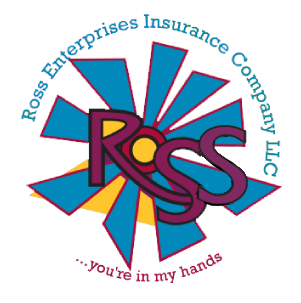Reference-Based Pricing (RBP): A Guide for HR Departments

Healthcare costs have soared in recent years, burdening businesses with hefty expenses. This evolving healthcare landscape often lacks transparency, leading to unforeseen expenses that strain budgets further. Consequently, HR departments are actively seeking innovative solutions to manage costs while ensuring employee well-being.
Amid these challenges, Reference-Based Pricing (RBP) has emerged as a game-changer. RBP is a revolutionary medical plan that enables employers to set a predetermined amount for reimbursing specific medical services.
Keep reading for the ultimate guide to RBP for HR departments. We will delve into its intricacies, advantages, challenges, and implementation strategies.
What Is Reference-Based Pricing (RBP)?
Reference-based pricing (RBP) is a method of paying for healthcare services that sets a standard price based on a reference point. This reference point is usually a certain percentage above the Medicare reimbursement rates.
RBP takes a different approach from traditional healthcare payment models. These rely on negotiated rates between healthcare providers and insurance companies.
With RBP, the payer (the employer or insurer) determines a fixed amount for a particular healthcare service. This predetermined amount acts as a cap, ensuring that the payer doesn’t pay more than the specified limit for the service provided.
In essence, RBP shifts the focus from negotiating rates to establishing clear pricing guidelines. Setting predetermined amounts for various medical services brings transparency to healthcare costs.
RBP provides a structured approach that simplifies the payment process. The fixed amount of a reference-based pricing plan also helps to control spending and reduces ambiguity for both payers and providers.
For HR departments, understanding RBP is essential. It offers a strategic way to manage healthcare expenses while ensuring employees receive quality care.
How Reference-Based Pricing Works
Reference-Based Pricing (RBP) operates on the premise of setting a reference point. This is often derived from publicly available data such as Medicare rates or other standardized pricing benchmarks. This reference point serves as the cornerstone for determining the maximum reimbursement amount for designated medical services or procedures.
Once there is a reference point, a price is set for specific medical services or procedures. This price is the maximum amount that the payer will reimburse for those services. Providers must adhere to the predetermined rate set by the employer for reimbursement.
Providers may initially bill above this reference price. However, reimbursement is contingent upon their acceptance of the predetermined rate.
Providers have the option to accept the reference-based payment as payment in full. Or, they can engage in negotiation with the payer for more compensation. For employees, understanding their responsibility under RBP is crucial.
They may have to cover any costs exceeding the reference-based reimbursement amount. So they need proper guidance and training on how to choose the right healthcare plans. They must consider both the quality of care and the associated costs.
The Benefits of Reference-Based Pricing
RBP offers several advantages for HR departments and organizations. First of all, it provides a mechanism for cost containment. This is because it has predetermined rates for healthcare services.
This reduces reliance on negotiated rates and can lead to significant cost savings. RBP also improves transparency in healthcare pricing. It gives employees access to the prices of healthcare services.
This enables employees to make informed decisions about their healthcare providers and services. It allows them to select providers that not only offer quality care but also deliver cost-effective services. Additionally, RBP offers flexibility to employers by allowing them to tailor the program to their specific needs.
Employers can target high-cost procedures or providers with RBP. At the same time, they can maintain traditional payment methods for other services. This flexibility enables organizations to meet the needs of their employees while managing costs.
Challenges of Reference-Based Pricing
While RBP has its benefits, it does have some challenges that HR departments need to address. RBP can lead to potential disputes between providers and payers regarding reimbursement rates. This requires negotiations to make sure that all parties reach a satisfactory agreement.
Concerns also arise around access to care under RBP. Some providers may choose not to accept reference-based payments. This limits employees’ options for healthcare services. It may potentially affect employees’ ability to receive timely and appropriate care.
HR departments must address these concerns proactively. This will ensure that employees have access to the healthcare services they need while managing costs.
How to Implement Reference-Based Pricing
Implementing RBP requires a systematic approach tailored to the organization’s needs and goals. To start with, it is crucial to evaluate the suitability of RBP with your organization.
Check for alignment with the organization’s objectives, employee demographics, and healthcare utilization patterns. This assessment helps determine whether RBP is a viable solution for managing your healthcare costs.
Secondly, organizations should partner with experienced RBP vendors. These vendors can provide invaluable expertise and support throughout the implementation process.
They can also assist in establishing reference points, administering programs, and negotiating with providers. They help with the smooth execution of RBP initiatives. Educating employees about RBP is also essential.
Providing guidance to employees about RBP ensures understanding and compliance with the model. During these sessions, emphasize the importance of selecting providers like Ross Enterprises that specialize in reference-based pricing. This empowers the employees to make informed decisions about their healthcare.
Continuous monitoring and adjustment are also a must. This helps to gauge the effectiveness of RBP implementation.
Regular evaluation also helps to optimize cost savings and employee satisfaction. It ensures that RBP remains aligned with your evolving needs and goals.
Empowering Your Employees With Reference-Based Pricing
Reference-based pricing offers HR departments a promising way to manage healthcare costs while ensuring quality care for employees. However, HR teams have to strategically implement RBP to prevent any challenges.
By partnering with experienced vendors, HR departments can navigate pricing complexities, reduce balance billing risks, and optimize cost savings. With careful planning, RBP becomes a valuable tool for financial prudence and employee well-being.
As you implement RBP, focus on proactive management and strategic planning. Assess its suitability, educate employees, and continuously monitor and adjust the implementation. For expert guidance on the best insurance plans for your organization, reach out to us today.
